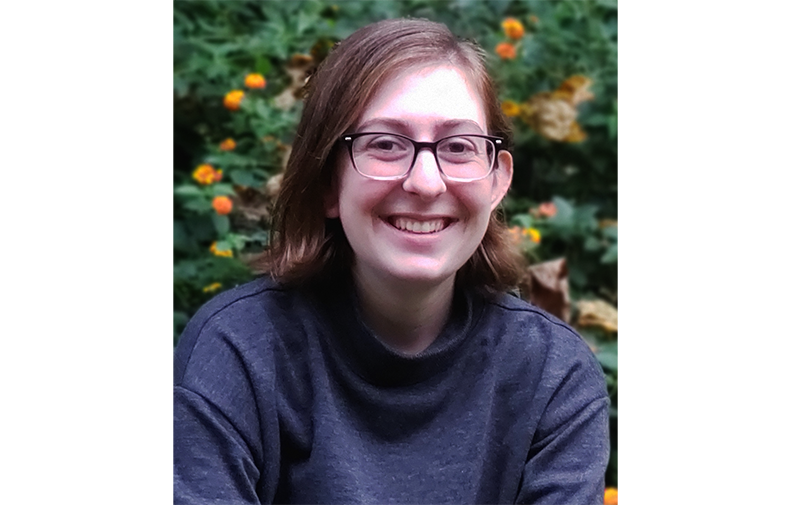Article by: Ellen Lampert-Greaux, Live Design
Sydney Dye is a projection design student double majoring in Theatrical Design & Technology and Communication Design at Elon University. She recently won first place in the projection design category at the Southeastern Theatre Conference in Louisville, Kentucky for her design of We Will Rock You (Elon University). Sydney had the opportunity to work at The Muny as the video design intern in 2019, and was excited to return in 2020 before COVID-19 delayed the season until 2021. As Sydney continues to learn and grow as a designer, she hopes to be able to create designs for performances that highlight diversity and challenge audience members to reflect on their own experiences. She is a recipient of the 2020 Pat MacKay Diversity In Design Scholarship, presented by Live Design in collaboration with USITT and TSDCA.
Live Design: Why did you apply for the Pat MacKay Diversity In Design Scholarship?
Sydney Dye: I applied for the Pat MacKay Diversity in Design Scholarship because I wanted to join a community of young sound, lighting, and projection designers that not only value diversity, but are actively advocating for an increase in diversity in the design industry.
LD: What made you interested in the field of lighting, projection/video, or audio design?
SD: I first became interested in projection design after writing a paper about the field for an Intro to Technical Production class in my first semester at Elon University. I had a background in film production and media design, but had never applied those skills to live entertainment. Once I had my first opportunity to design projections for a dance concert at Elon University, I was hooked on the artform. The use of video and imagery in live performance is so incredibly effective and powerful in terms of storytelling. Additionally, because of how relatively new the field is, along with the constant advancement in technology, it's exciting to experiment with new ideas within the field.
LD: What are your career goals?
SD: I want to work as a projection designer for live entertainment. I would also, eventually, like to be a mentor to young projection and video designers.
LD: How can the industry better serve underrepresented communities?
SD: While I think there are several ways the theatrical design industry can better serve underrepresented communities, there are two specific areas that come to mind. The first is paying interns and apprentices a living wage for the work they do. This issue has recently seen an increase in conversation as individuals are sharing their stories on social media. I believe a key aspect of increasing diversity and underrepresented communities is to eliminate economic barriers that come with unpaid or severely underpaid internships and apprenticeships.
The second way that the industry can better serve underrepresented communities is to focus on creating diverse communities and teams rather than only hiring a single diverse individual. Hire female-identifying individuals. Hire Black individuals, Indigenous individuals, and People of Color.
Hire trans, non-binary, and gender non-conforming individuals along with LGBTQIA+ individuals. A diverse team equates to richer and more powerful storytelling because it brings people with vastly different experiences together. While I believe we have started to see this shift in the industry, there is still more work to be done.
LD: Who or what are your influences, in terms of people or events?
SD: This is a hard question to answer because I am constantly influenced by the people and events around me. My family, friends, and people that I work with are all sources of inspiration, along with the music, art, media, and information I consume every day. A few of the many projection designers that have had an influence on me are Hannah Wasileski, Caite Hevner, Finn Ross, Jared Mezzocchi, and Greg Emetaz. Additionally, I find a lot of inspiration in graphic design, specifically how color and texture play a role in the look and feel of imagery.
LD: Are there particular challenges you have faced?
SD: As a young, female-identifying projection designer, I have encountered the challenges that most female-identifying designers and technicians face in the male-dominated entertainment design industry. The best advice I have received in regards to being a woman in this industry is “Don’t be afraid to take up space.” This means don’t be afraid to say, “I wasn’t finished” when interrupted. It means don’t be afraid to insist on being a part of a conversation you were left out of. It means not being afraid to use your voice. Women are too often told “this is just how things are in the industry.” This can no longer be accepted. Women, along with all other underrepresented communities, deserve a seat at the table.
Off
Support USITT
For many 501(c)3 nonprofit organizations, USITT included, donations are a lifeline. We are able to continue to expand our online offerings to our Members and to our industry thanks to Membership dollars and the generosity of our donors.







